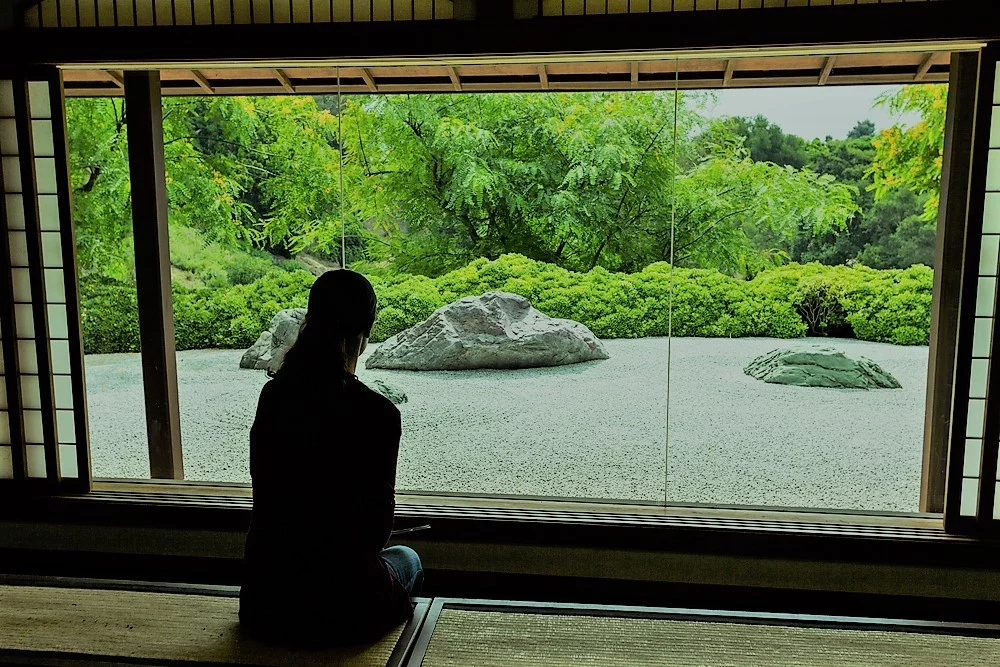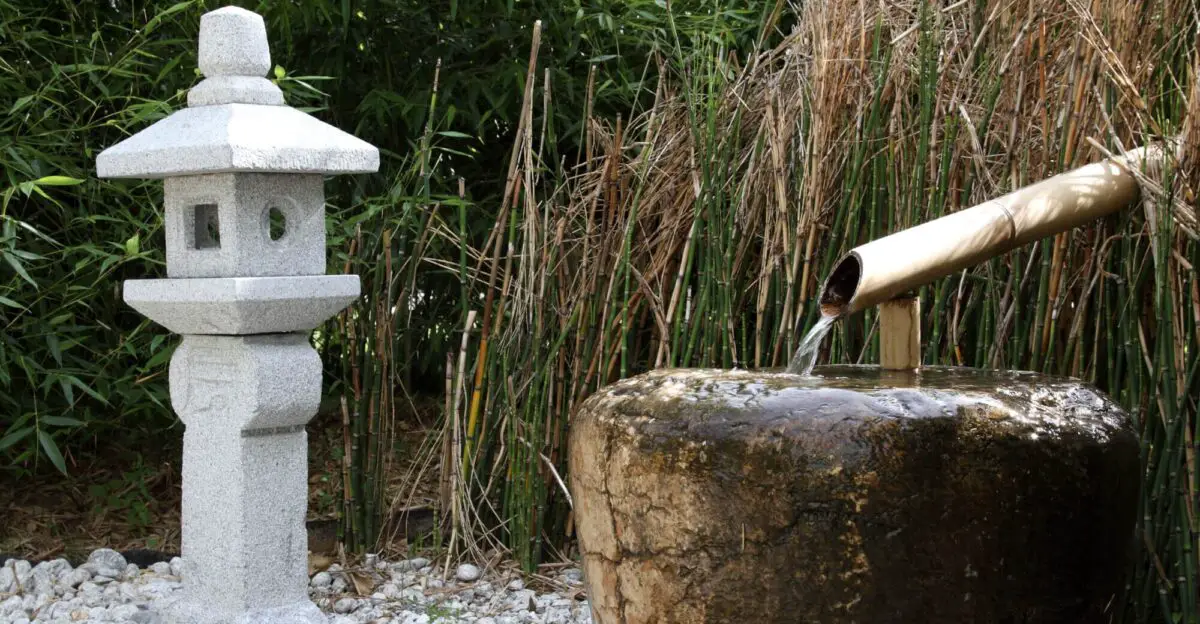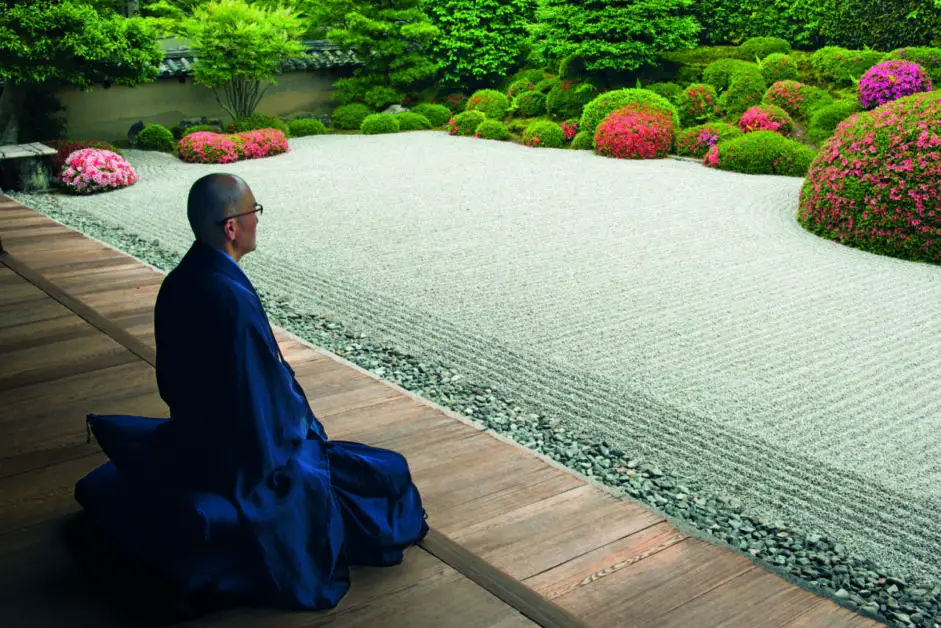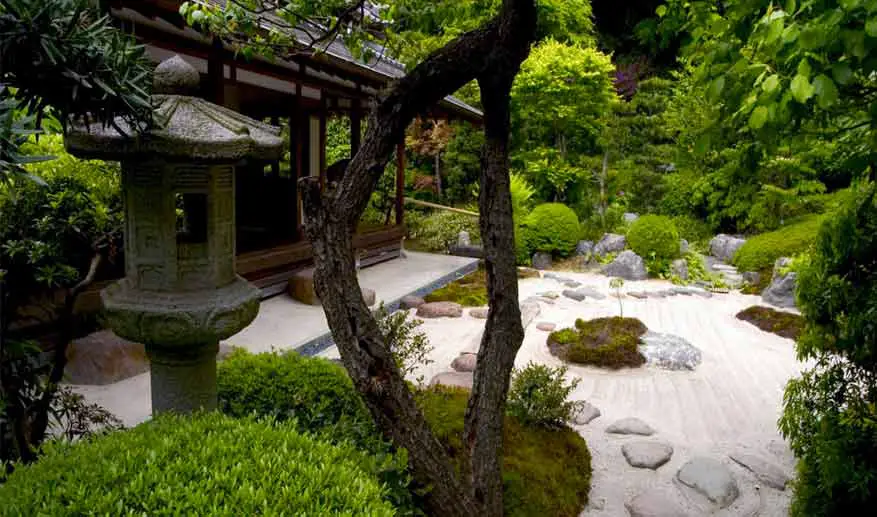Zen Garden Creation: Crafting Serene Spaces
Creating a Tranquil Oasis in Your Backyard
To create a tranquil oasis in your backyard, it is essential to carefully consider the layout and design elements that will contribute to a peaceful and serene atmosphere. Begin by selecting a location in your yard that receives ample sunlight and is shielded from strong winds. This will ensure that your garden flourishes and provides a sanctuary for relaxation. Additionally, consider the natural features of your backyard, such as trees or existing landscaping, and incorporate them harmoniously into your design to enhance the overall sense of tranquility.

When choosing plants and materials for your Zen garden, opt for varieties that are low-maintenance, drought-tolerant, and complement the principles of Zen design. Japanese maples, bamboo, and ornamental grasses are popular choices for creating a calming yet visually appealing landscape. Incorporate elements such as rocks, gravel, and sand to symbolize water and create a sense of flow within your garden. By carefully selecting plants and materials that align with the concept of balance and harmony, you can create a serene space that promotes relaxation and inner peace.
Selecting the Perfect Location for Your Zen Garden
Finding the perfect location for your Zen garden is essential to create a tranquil oasis in your backyard. When selecting a spot, consider areas that receive ample sunlight for plant growth and meditation. Choose a location away from noisy distractions, such as traffic or neighborhood sounds, to enhance the peaceful ambiance of the space. Additionally, ensure the area is easily accessible and visible from your home so you can enjoy the beauty of your garden from indoors as well.
Another factor to consider when choosing the location for your Zen garden is the natural landscape of your backyard. Look for areas with level ground or gentle slopes to make it easier to design paths and walkways that flow harmoniously with the existing terrain. Take into account any existing trees or structures that can be incorporated into your garden design to create a seamless blend of nature and man-made elements.
Choosing the Right Plants and Materials for a Serene Space
When creating a serene space in your backyard, it is essential to carefully choose the right plants and materials to enhance the tranquility of the area. Selecting plants that promote relaxation and calmness, such as lavender, jasmine, and chamomile, can help create a soothing atmosphere in your Zen garden. These plants not only add visual appeal but also release fragrances that can have a calming effect on the mind and body.
In addition to plants, choosing the right materials for your Zen garden is crucial in maintaining a peaceful environment. Natural elements like wood, stone, and gravel can add texture and depth to the space while creating a harmonious balance. Incorporating sustainable materials that blend well with the surroundings can further elevate the serenity of your outdoor oasis. By carefully selecting plants and materials that complement each other, you can create a tranquil retreat that encourages relaxation and inner peace.
The table below shows us the materials and plants that will be needed for a zen garden design:
| Aspect | Description |
|---|---|
| Materials | Use natural materials such as gravel, sand, pebbles, and rocks to create minimalist pathways, raked patterns, and focal points in the garden. |
| Incorporate wood elements like cedar or bamboo for bridges, fences, and simple furniture pieces, adding warmth and texture to the garden design. | |
| Integrate stone lanterns, water basins (tsukubai), and stone sculptures for symbolic and meditative focal points in the garden. | |
| Plants | Select plants that evoke a sense of tranquility and simplicity, such as Japanese maple, bamboo, bonsai trees, moss, and ornamental grasses. |
| Include evergreen plants and shrubs for year-round greenery and minimal maintenance, contributing to the timeless appeal of the Zen garden. | |
| Emphasize the beauty of simplicity by limiting plant variety and focusing on geometric shapes, textures, and subtle contrasts in foliage and form. |
Designing Paths and Walkways to Enhance Relaxation
Enhancing the design of paths and walkways in your Zen garden can greatly contribute to the overall sense of relaxation and tranquility in the space. Consider using natural materials such as gravel, sand, or stepping stones to create meandering paths that guide visitors through the garden in a peaceful and contemplative manner. Curved pathways can evoke a sense of flow and movement, encouraging a leisurely stroll and allowing for moments of reflection as one navigates the garden.
Incorporating elements of symmetry and asymmetry in the layout of paths can add visual interest and create a harmonious balance within the garden. Strategic placement of walkways can also help define different areas within the space, such as meditation corners or floral displays, enhancing the overall design and functionality of the garden. By carefully planning the paths and walkways in your Zen garden, you can create a serene environment that fosters a deep sense of calm and relaxation for all who visit.
Incorporating Water Features for a Soothing Ambiance
Water features are a popular addition to many gardens, providing a sense of tranquility and relaxation. The gentle sound of flowing water can create a soothing ambiance that helps to drown out the noise of the outside world. Whether it’s a simple fountain or a more elaborate pond, incorporating water into your garden design can elevate the overall sense of peace and harmony in the space.

In addition to the auditory benefits, water features can also visually enhance your garden, adding movement and life to the landscape. The reflective surface of the water can create a sense of depth and openness, making the space feel larger and more inviting. By carefully selecting the size, shape, and placement of your water feature, you can create a focal point that draws the eye and enhances the overall aesthetic of your outdoor oasis.
Adding Elements of Nature to Elevate the Zen Experience
When it comes to elevating the Zen experience in your garden, incorporating elements of nature is essential. By seamlessly blending natural components into your outdoor sanctuary, you can create a harmonious atmosphere that promotes tranquility and relaxation. Consider adding native plants, such as Japanese maples or bamboo, to infuse your space with organic beauty and a sense of grounding.
In addition to plants, rocks and stones can also play a pivotal role in enhancing the Zen ambiance of your garden. Strategically placing boulders or pebbles throughout the landscape can symbolize stability and strength, while also adding visual interest and texture. These natural elements not only contribute to the aesthetic appeal of the space but also serve as reminders of the everlasting presence of nature.
Maintaining Your Zen Garden for Longevity and Beauty
To ensure your Zen garden remains a serene and beautiful space, regular maintenance is key. Begin by removing any debris such as fallen leaves or twigs, as they can disrupt the peaceful ambiance of the garden. Trim any overgrown plants to maintain a neat and harmonious appearance.
Regular watering is essential to keep your plants healthy and vibrant. Be mindful of the specific watering needs of each plant in your Zen garden to prevent over or under-watering. Consider installing a drip irrigation system to ensure efficient and effective watering, minimizing water wastage and promoting plant growth.
Understanding the Principles of Zen Design
Zen design principles are rooted in the concept of simplicity, minimalism, and harmony. Every element in a Zen garden serves a purpose and contributes to the overall sense of tranquility. One key aspect of Zen design is the idea of creating a balanced and harmonious space that reflects the natural world in a simplified manner. Symmetry is often avoided in favor of asymmetrical arrangements to evoke a sense of natural beauty and imperfection, embracing the idea of wabi-sabi, the acceptance of transience and imperfection.
Incorporating natural elements such as rocks, sand, gravel, and plants in a Zen garden is essential to create a sense of peacefulness and connection to nature. The selection and placement of these elements are done thoughtfully to mimic natural landscapes like mountains, rivers, and forests. By carefully considering the relationship between the different elements and their placement, a Zen garden can evoke a sense of serenity and contemplation, inviting visitors to pause, reflect, and find inner peace.
The principles of a zen garden is given below as a chart for better understanding:
| Principle | Description |
|---|---|
| Simplicity | Strive for simplicity by using clean lines, uncluttered spaces, and minimal ornamentation to create a sense of clarity and calm. |
| Minimalism | Embrace minimalism by incorporating only essential elements and avoiding excess decoration or distraction in the design. |
| Harmony | Seek harmony and balance in all aspects of design, including the arrangement of elements, colors, textures, and spatial relationships. |
| Naturalness | Incorporate natural materials, colors, and textures to evoke a connection with nature and create a serene environment. |
| Tranquility | Foster a sense of peace and tranquility through the careful selection of materials, colors, and plants to soothe the senses. |
| Modesty | Practice humility and modesty in design by avoiding ostentation and excess, focusing instead on simplicity and authenticity. |
Creating Balance and Harmony in Your Outdoor Space
To achieve balance and harmony in your outdoor space, it is essential to carefully consider the placement of elements within your garden. Distributing various features evenly throughout the area helps create a sense of equilibrium that is visually pleasing and soothing to the mind. By arranging plants, pathways, and décor in a way that complements each other, you can establish a harmonious environment that promotes relaxation and tranquility.
In addition to spatial arrangement, the selection of colors and textures plays a crucial role in achieving balance in your outdoor space. Incorporating a diverse range of hues and materials can add depth and interest to your garden while maintaining a sense of cohesion. By blending different shades and surfaces thoughtfully, you can create a visually appealing landscape that evokes a sense of peace and unity with nature.
Utilizing Minimalism to Achieve Serenity
Minimalism is a design principle that focuses on simplicity, elegance, and ensuring that every element serves a purpose in the overall aesthetic. In the context of creating a Zen garden, embracing minimalism can significantly enhance the sense of serenity and tranquility in your outdoor space. By carefully selecting a few key elements and avoiding clutter or unnecessary decorations, you can achieve a clean and uncluttered look that promotes a feeling of peace and relaxation.
When utilizing minimalism in your Zen garden, opt for clean lines, uncluttered spaces, and a limited color palette to create a sense of harmony and balance. Consider using natural materials such as rocks, gravel, and wood to add texture and visual interest without overwhelming the space. Remember that less is often more in minimalist design, so focus on quality over quantity when selecting plants, sculptures, or other decorative elements for your garden. By embracing simplicity and mindfulness in your design choices, you can cultivate a serene oasis that promotes a sense of calm and well-being in your outdoor retreat.
Incorporating Meditation Areas for Inner Peace
When creating a meditation area in your Zen garden, consider a secluded spot that offers privacy and peace. This area should be free from distractions, allowing you to fully focus on your meditation practice and connect with nature. Surround the meditation space with elements such as lush greenery, calming water features, and natural stones to enhance the sense of tranquility and serenity.

Incorporate comfortable seating or cushions in your meditation area to promote relaxation and proper posture during meditation sessions. Choose materials that are weather-resistant and low-maintenance to ensure longevity and durability in your outdoor space. By creating a dedicated meditation area within your Zen garden, you can cultivate a sense of inner peace and mindfulness, reaping the benefits of a harmonious connection with nature and yourself.
Enhancing Your Zen Garden with Aromatherapy
Aromatherapy can be a powerful addition to your Zen garden, enhancing the overall calming experience it provides. By incorporating scents that promote relaxation and tranquility, you can create a multi-sensory oasis that soothes the mind and body. Lavender, known for its stress-relieving properties, can be planted near seating areas or pathways to release its calming fragrance as you unwind in your garden.
Citrus scents like lemon or orange can invigorate and uplift your spirits, adding a refreshing element to your Zen space. Consider planting citrus trees or using essential oil diffusers strategically placed around your garden to disperse these energizing scents. Remember to choose natural, high-quality essential oils or fragrant plants to ensure the purity and effectiveness of the aromatherapy in your garden.
Exploring Different Styles of Zen Gardens
Zen gardens come in various styles, each with its unique characteristics and design elements. One popular style is the Karesansui, also known as the dry landscape garden, which features carefully raked gravel to symbolize water, with rocks and stone arrangements representing islands. This minimalist approach promotes contemplation and meditation, inviting peace and serenity into the space. Another style is the Tsukiyama garden, which incorporates hills, water features, and vegetation to mimic natural landscapes, creating a sense of tranquility and harmony with nature.
In contrast, the Chaniwa garden, inspired by tea ceremony aesthetics, focuses on simplicity and refinement. It typically includes a tea house, stepping stones, and strategically placed plants to create a serene setting for tea gatherings. By understanding the different styles of Zen gardens, gardeners can choose the one that resonates with their preferences and intentions, whether seeking contemplation, connection with nature, or a space for spiritual practices.
Utilizing Feng Shui in Your Garden Design
Feng Shui, an ancient Chinese practice that focuses on harmonizing individuals with their surrounding environment, can be a valuable tool in designing a serene and balanced garden space. By incorporating Feng Shui principles into your garden design, you can create a space that promotes positive energy flow and enhances overall well-being. One key aspect of Feng Shui is the use of the Bagua map, which divides a space into nine areas, each corresponding to different aspects of life such as health, wealth, and relationships. By aligning elements in your garden according to the Bagua map, you can create a harmonious and balanced environment that supports your goals and aspirations.
In addition to the Bagua map, the principles of Feng Shui also emphasize the importance of incorporating elements such as water features, plants, and pathways to create a sense of tranquility and balance in your garden. Water features, such as fountains or ponds, can symbolize wealth and abundance, while plants like bamboo or bonsai trees can bring in elements of nature and promote growth and vitality. Creating meandering pathways that flow smoothly through your garden can enhance the overall sense of relaxation and encourage the movement of positive energy throughout the space. By incorporating these elements thoughtfully and purposefully, you can transform your garden into a peaceful oasis that nurtures both body and soul.
Watch the video to make your own zen garden.
Seeking Inspiration from Traditional Japanese Gardens
Traditional Japanese gardens have long been admired for their meticulous design and calming aesthetic. Drawing inspiration from these ancient landscapes can provide valuable insights for creating your own serene outdoor oasis. One key aspect of Japanese garden design is the concept of “wabi-sabi,” which emphasizes the beauty of imperfection and the passage of time. By incorporating elements such as weathered stones, moss-covered pathways, and asymmetrical arrangements, you can evoke a sense of tranquility and harmony in your own garden.
Another hallmark of Japanese gardens is the careful selection and placement of plants to create visually pleasing compositions. By studying the principles of “horai,” or balance and harmony, you can learn how to create a sense of equilibrium in your garden through the strategic use of trees, shrubs, and groundcovers. Additionally, exploring traditional Japanese plant choices like cherry blossoms, Japanese maples, and bamboo can add authenticity and depth to your garden design, capturing the essence of nature in its purest form.
What are some common elements found in traditional Japanese gardens?
Traditional Japanese gardens often include elements such as rocks, gravel, water features, bamboo, and carefully pruned trees and shrubs.
How can I incorporate Feng Shui principles into my Zen garden design?
To incorporate Feng Shui principles into your Zen garden design, you can focus on creating a harmonious flow of energy (chi) by placing elements in specific areas based on the Bagua map.
Why is it important to maintain a Zen garden for longevity and beauty?
Maintaining your Zen garden is important to ensure that it continues to bring you peace and tranquility. Regular upkeep helps prevent overgrowth, keeps the space tidy, and allows you to enjoy its beauty for years to come.
How can I enhance my Zen garden with aromatherapy?
You can enhance your Zen garden with aromatherapy by planting fragrant herbs and flowers such as lavender, jasmine, or rosemary. You can also incorporate essential oils or incense burners to create a calming atmosphere.
What are some different styles of Zen gardens I can explore for inspiration?
Some different styles of Zen gardens you can explore for inspiration include dry rock gardens (karesansui), tea gardens (chaniwa), and stroll gardens (kaiyu-shiki-teien). Each style has its own unique elements and characteristics.







